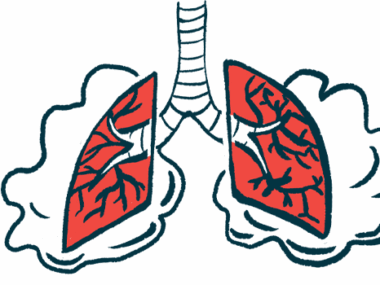Woman has cyclic Cushing’s syndrome relapse after pregnancy
In cyclic Cushing’s, periods of high and low cortisol levels alternate
Written by |

A 30-year-old woman had a relapse of cyclic Cushing’s syndrome shortly after giving birth, according to a case report that researchers said underscores the importance of “long-term follow-up in patients with a high index of suspicion for cyclic [Cushing’s syndrome].”
The study, “ACTH-dependent Cyclic Cushing Syndrome With Successful Pregnancy and Early Postpartum Relapse,” which was published in JCEM Case Reports, also highlighted the “diagnostic challenges in managing the condition during pregnancy and the peripartum period.”
“This is the first reported case of early postpartum relapse in cyclic [Cushing’s syndrome],” the researchers wrote.
In Cushing’s syndrome, abnormally high levels of the hormone cortisol can lead to a variety of symptoms, including weight gain, fatigue, and high blood pressure. Many of the symptoms, along with high cortisol levels, may also be seen during pregnancy, making it difficult to monitor or diagnose the disease. In rare cases, pregnancy may cause Cushing’s to develop or recur.
Cyclic types of Cushing’s can complicate this even further, according to researchers. In cyclic Cushing’s syndrome, periods of high cortisol alternate with periods of normal or low cortisol, with symptoms often easing as cortisol falls. These peaks and troughs can last from days to years and be irregular. At least two peaks and one trough in cortisol are typically needed to diagnose cyclic Cushing’s.
An initial diagnosis
Here, researchers in Malaysia described the case of a woman in whom both cyclic Cushing’s and pregnancy-related relapse made managing the disease difficult.
The woman was first seen at an emergency room after two weeks of persistent headaches and blurred vision. She had high blood pressure (hypertension) and an elevated heart rate, and was diagnosed with diabetes. She also had characteristic Cushing’s symptoms including acne, a buildup of fat near her upper back and collarbone, and purple stretch marks on her abdomen.
Lab tests showed abnormally high levels of cortisol in her urine. Levels of adrenocorticotropic hormone (ACTH), a chemical released by the pituitary gland that stimulates cortisol production, were also high.
A brain MRI scan showed a small lesion on her pituitary gland and further testing suggested this was the likely source of her high ACTH levels. The woman was diagnosed with Cushing’s disease, a form of Cushing’s syndrome wherein a pituitary tumor causes elevated ACTH and cortisol.
Surgery to remove the lesion was planned, but at a four-month follow-up appointment, the woman’s urine cortisol levels were normal. For more than two years, her cortisol didn’t rise above normal.
“During this period, her symptoms gradually resolved completely, and her co-morbidities, including hypertension and diabetes, were well controlled,” the researchers wrote.
Relapse after pregnancy
The woman became pregnant during this trough period. She had elevated urine cortisol levels in her second and third trimesters, but this is consistent with a normal pregnancy and she didn’t exhibit any other features of Cushing’s. She developed preeclampsia, a pregnancy complication associated with high blood pressure, but delivered a healthy baby after a cesarean section at 37 weeks.
Eight weeks after giving birth, the woman had a relapse and entered a second cortisol peak phase, supporting a diagnosis of cyclic Cushing’s. Many of her initial symptoms returned, including acne, purple stretch marks, and excessive weight gain. A new MRI scan showed the lesion on her pituitary gland was slightly larger.
The lesion was surgically removed and testing confirmed it was an ACTH-producing tumor.
The woman’s cortisol levels dropped. In the year and a half after the procedure, levels remained normal, her symptoms didn’t return, and an MRI showed no residual tumor remained. She lost weight and was able to stop taking hypertension and diabetes medications.
Despite these signs, it can be difficult to know if someone is actually in remission from cyclic Cushing’s, said the researchers, who noted that “differentiating true remission from a temporary trough phase in cyclic [Cushing’s syndrome] requires careful and ongoing clinical, biochemical, and imaging assessments.” They proposed a series of standardized diagnostic tests to aid clinicians in cases of suspected cyclic Cushing’s syndrome.






